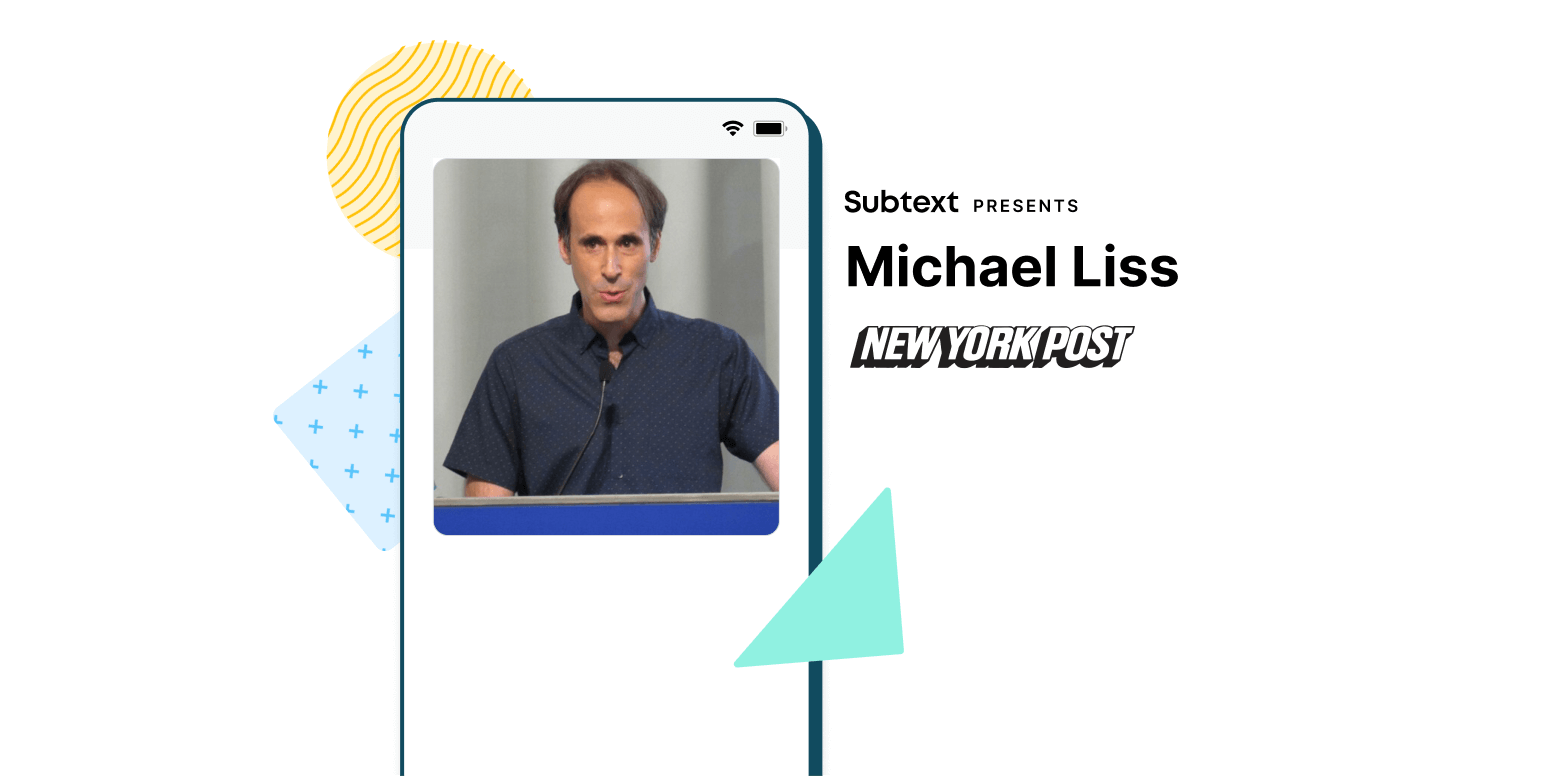
Q&A With NY Post's VP of Product, Michael Liss
At Subtext we're fortunate to work with amazing partners across media, sports, entertainment, events, politics and more. We love learning from our partners to highlight the great work they're doing and to improve our own offerings. With that in mind, please check out our Q&A with Michael Liss below on their use of Subtext.
Q: How would you explain what Subtext is from a strategic perspective within your organization?
A: In our current uses, Subtext is a way to drive engagement and the relationship between our writers and readers in a personal, unique way with a very differentiated value proposition. Within the context of our premium sports membership, we view it as a unique and sticky value proposition to drive both delight and retention.
Q: What, if anything, have you found the most surprising about texting with the audience?
A: That it really does feel like texting with the audience. You can see how different the relationship is in this channel compared to others that we have. The audience is very responsive, and it feels very personal and direct.
Q: NY Post is using text heavily around sports right now. Tell us about Sports+ and how Subtext fit into your goals here.
A: The promise of Sports+ is to provide premium content and analysis and a direct relationship between our audience and writers. Subtext does both of these, in a unique, delightful and sticky way. Our Post sports super-fans have always felt like they're on a first-name basis with the sportswriters they love. Now they're texting with them. It's amazing.
Q: What do you see as future potential uses of texting with the audience?
A: Within The Post, we see a few ways in which we could expand our use cases, across a few different models. We know that there's more we can do and we're excited to explore it. And in the meantime, we continue to expand our uses within Sports+.
Q: What have been the biggest organizational obstacles with Subtext. If you were to give advice to somebody else in your shoes - what would it be?
A: I think the first challenge is just clearly communicating what the platform is, how it works, and the ways in which we can use it. Followed by assuring people that this won't become a new burden to them, as they're all already incredibly busy. It can sound scary to tell writers that they're going to be texting with our readers now, if not done properly. But the truth is, once the writers get it and start, they all love it. So it's just getting over that initial hurdle.
Because of the topics we happened to launch with, they were all single-writer campaigns. We're now doing campaigns with multiple writers involved. This shares the burden internally while also widening the breadth of coverage and frequency for our readers, and has been a great way forward.
We've also begun experimenting with short-term campaigns, to great success as well. Next up is starting to play with segmentation within a campaign. We can always go deeper with our offerings and how we fulfill them. Though first you just need to get your feet wet a little through simpler paths.
The other challenge is user discovery and sign-up. We know how powerful a tool we have here. The challenge is making sure all of our readers know about it and understand it clearly as well. That is an on-going thing to optimize.
Q: Are you subscribed to any campaigns outside of NY Post? If so – what do you think of it as a user? What’s your favorite channel?
A: I'm almost drowning in our own campaigns at the moment, but yes, I've subscribed to This Week in Digital Media long before we were live as a publisher on the platform ourselves. In addition to finding the topics and guest hosts great, and grabbing the microphone for a week myself, being involved as a user for a long time leading up to launching ourselves was certainly an invaluable experience.
Q: What advice do you have for us going forward? If you were in our shoes – what would you focus on?
A: API integrations, analytics, making it easier and easier for publishers to be able to sign new users up, making it easier for publishers to connect all of their other platforms and partners tech directly with Subtext, etc.
To learn more about how to launch your own text community, schedule a demo today.